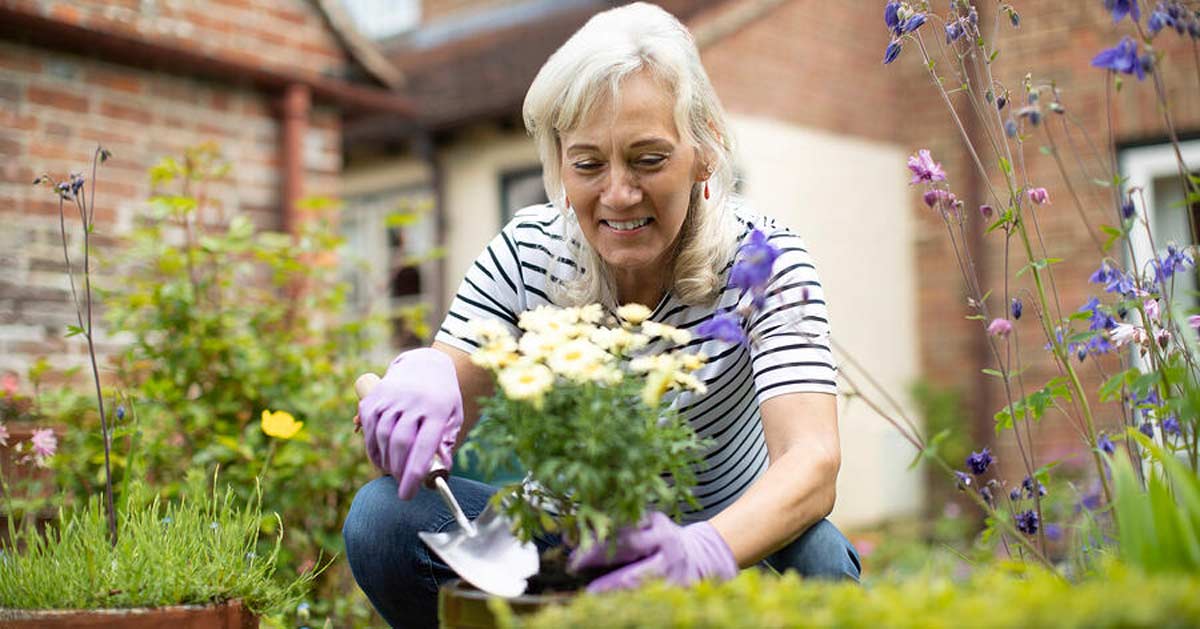Ahh … summertime! Sunshine, blue skies and yes … COVID-19 are here. But there are plenty of ways to safely enjoy our beautiful Michigan summer with just a little vigilance and patience. This is especially important for seniors who are among the most vulnerable but can really benefit from being outdoors again after a very grueling winter and spring. Here are some great tips for maximizing the joys of summer while minimizing risk.
Tip #1 – Precautionary steps for seniors
Maintain all the precautionary steps used during the quarantine and recommended by the Centers for Disease Control and Prevention:
- Wear a mask when in public or around others even in small groups.
- Continue to practice social distancing of at least 6 feet (more is always better).
- Wash your hands with soap and water as often as possible and/or use hand sanitizer with at least 60% alcohol content. Don’t forget the 20 second rule for hand washing or just sing Happy Birthday twice.
- Avoid touching your face and use a tissue when coughing or sneezing.
- If you don’t feel well, stay home and contact your health care provider if necessary.
Tip #2 – Seniors should wear a mask
Don’t let the opening of public businesses and spaces convince you that everything is fine; It is not. Relaxing attention to all of the above is exactly how the virus has started returning in states and cities that have begun to reopen. Keep a mask and hand sanitizer handy whenever you venture out and steer clear of individuals and groups who are not wearing masks. Learn more about the importance of wearing masks to avoid getting and spreading the virus from the World Health Organization in the article “Amid confusion, WHO clarifies that COVID-19 can be spread without symptoms.”
Tip #3 – Gradually ramp up exercise
Pace yourself when getting exercise. Everyone wants to get out and go, but it’s best to gradually ramp up activity to ensure you don’t overdo it and end up at the doctor’s office. One of the easiest and safest ways to set a pace is through walking. According to Healthline.com, “The average walking speed of a human is 3 to 4 miles per hour, or 1 mile every 15 to 20 minutes,” but as we age, that speed slows significantly, so that “This averages out to a difference of 1.2 minutes slower for every kilometer (.62 mile) at age 60 than at age 20.”
So, take a walk and gradually increase your speed to a comfortable rate, keeping in mind that the CDC’s Physical Activity Guidelines for Americans recommends “adults get at least 150 minutes of moderate-intensity aerobic physical activity or 75 minutes of vigorous-intensity physical activity, or an equivalent combination each week.”
Tip #4 – Check the weather
Before you head out, be sure to check the weather forecast. Pay particular attention to temperature and humidity during the period you plan to be out, which together are expressed in the National Weather Services’ heat index. As relative humidity (i.e., the moisture content in the air) and temperature increase, the heat index climbs as well, and can quickly go from uncomfortable to downright dangerous.
According to the NWS, the heat index is what the body actually feels so, “When the body gets too hot, it begins to perspire or sweat to cool itself off. If the perspiration is not able to evaporate, the body cannot regulate its temperature. Evaporation is a cooling process. When perspiration is evaporated off the body, it effectively reduces the body’s temperature. When the atmospheric moisture content (i.e., relative humidity) is high, the rate of evaporation from the body decreases. In other words, the human body feels warmer in humid conditions. The opposite is true when the relative humidity decreases because the rate of perspiration increases.” Always take water with you, wear a hat with a brim or visor, and stop and rest in the shade if necessary.
Tip #5 – Cool off
Take a dip … but know the risks. It’s hard to imagine a Michigan summer without enjoying the cooling waters of pools and lakes, and the CDC is allowing public pools to reopen under fairly strict guidance for cleanliness and hygiene. When planning a visit to a public pool, try to find out how crowded it will be and make your decision accordingly. If you cannot easily social distance yourself from other swimmers, consider it a no go. Also, plan to avoid locker rooms and other areas where people gather in close proximity and bring your own snacks and beverages on ice. Find out more about safe swimming in Prevention.com’s article, “Is It Safe to Swim in a Public Pool During the Coronavirus Pandemic?”
Swimming safely in lakes is not so cut and dried. While the CDC has found no evidence that COVID-19 can spread in a chlorinated swimming pool, research by the Surfrider Foundation has found evidence that it can remain alive in fresh water and possibly saltwater as well. But it’s not just about the water. Crowded public beaches have already been cited as trouble spots and many across the country that were reopened, have again been closed. The bottom line, according to WebMD.com, is that until we know for sure from experts that it is 100% safe, it’s best to avoid it. One caveat, however, is for those with access to a private beach who can maintain social distancing on land and in the water.
In either case, the CDC does not recommend wearing a mask in the water.
Summer is short and can still be a lot of fun, if everyone does their part for the greater good. Wearing a mask, washing your hands, and social distancing combined with every day common sense can help each of us make the most of summer and stay safe.
Would you like to learn more about the amenities we have to offer? Check out our different residences on our website, schedule a tour, call Margaret Nagel at (517) 206-5000 or download our brochure to learn about our care levels, cost, and amenities.


